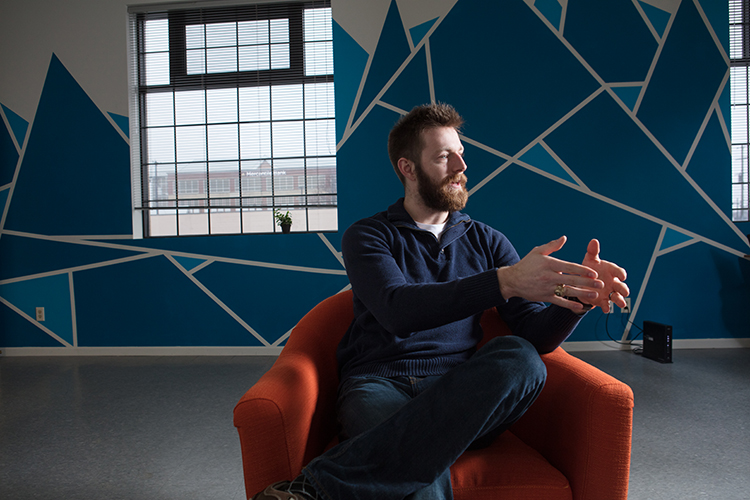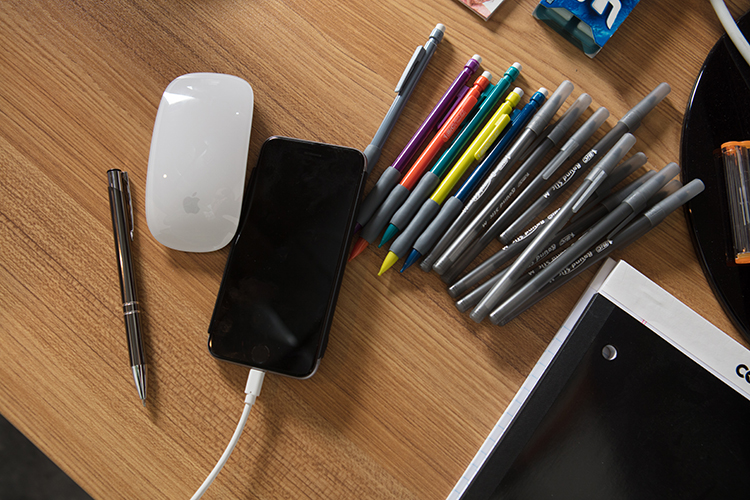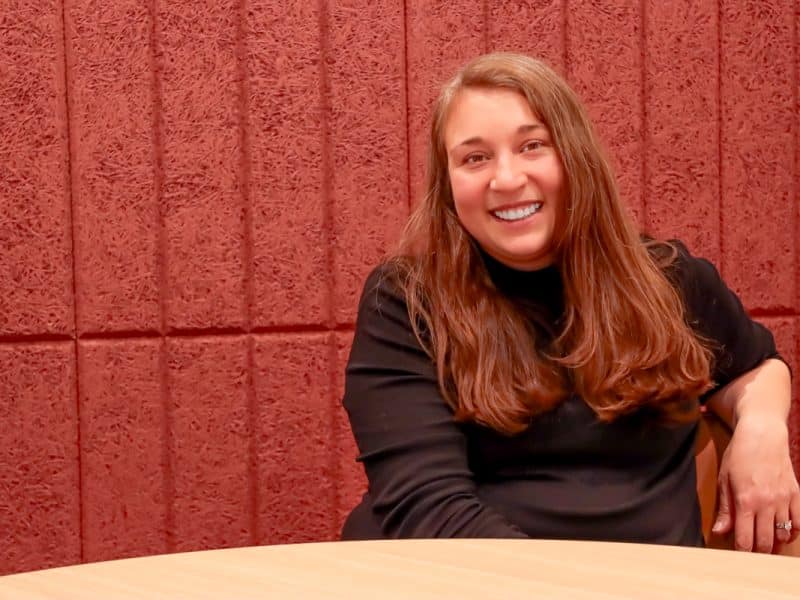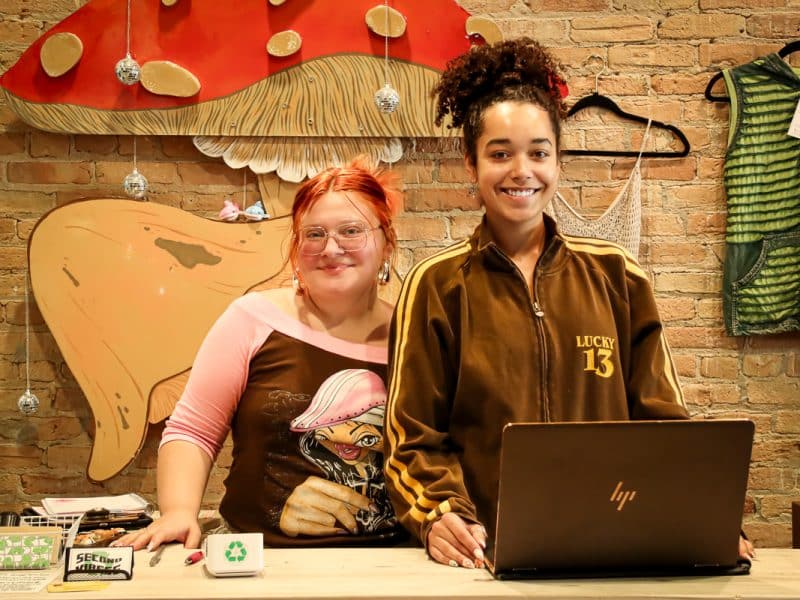Making it in GR: Lessons in crowdfunding
Self-proclaimed entrepreneur and Grand Rapids transplant, Don Rhoads, invented the BedBud Alarm out of a personal need. Through community involvement, market research and continuous revisions, he was able to develop his product. Though his journey is not over yet, he has already learned a lot along the way.

Last month’s “Making it in Grand Rapids” article focused on the ever-expanding alternative financing options for entrepreneurs, such as: impact investment funds, peer-to-peer lending solutions and crowdfunding platforms. Grand Rapids entrepreneur Don Rhoads is Owner/Inventor of At Last Industries (At Last), which created the BedBud Alarm. He is also Head of Development at Cut Through Creative. Rhoads shares his progression from having an idea through the development and launch of his Kickstarter campaign—and the insights he learned along the way.
Rapid Growth: Tell us a little bit about your professional background.
Don Rhoads: About three-and-a-half years ago, I moved up to Michigan from Texas, after graduating from Texas A&M with a degree in supply chain management. My first job out of college, I was a Supply Chain Analyst and I was [promoted to] a Project Manager for a local Tier I automotive manufacturer. My background is figuring out how things work, how we can get more cost-effective within our business practices—more on the supply side.
RG: Do you consider yourself an inventor, a small business owner, an entrepreneur—or is there another title you feel you best defines you?
DR: I consider myself more of an entrepreneur. [I’m] looking more at the big picture and seeing where opportunity lies.
RG: Tell us about your invention.
DR: I got what many people call the ‘entrepreneurial bite.’ One day, I spent the whole day trying to figure out if there was something I could do. I was laying in bed and couldn’t go to sleep. I rolled over and it was about 3 or 4 o’clock in the morning. I realized, I’m going to have to wake up in a few hours and I’m probably going to hit my snooze button multiple times. Then it occurred to me: this is a constant thing that I deal with every single day and I was curious if there was some sort of product out there that would alleviate this problem for me—[something] that would get me out of bed and keep me out of bed.

Immediately I was up searching the web trying to find a product that would either help me with my problem [and], if not, help me fix the problem. I couldn’t find anything so I took the first step in trying to figure out how to design a product to do this.
After many different revisions over a span of about a year-and-a-half, joining different groups—including the Grand Rapids Inventors Network—helped me validate the product. The product is called the BedBud Alarm, meant to be a connected product through Bluetooth, which you slide underneath your bed, calibrate to your weight, and set the time you want to wake up. The only way to turn it off is to get out of bed. For a set period of time, if you were to lay back down, your alarm would start going off again. So, it would inevitably force you to get out of bed and stay out of bed.
RG: A recent Small Business Credit Survey reported that “70 percent of startup applicants are in need of funding to support [their growth]” and that “52 percent of startups [have] applied for financing.” Did you pursue any avenues before deciding on crowdfunding?
DR: Yes. I actually applied for and presented at a 5×5 Night. Unfortunately, I didn’t win that one, but as much as I was disheartened, I was still [determined to] fulfill the product. Also, through traditional bank loans, I applied through my current bank. It was a little bit difficult. In a startup, it is difficult to put a value on a business. [Banks] want capital behind it because most startups fail anyway, so they want some substance behind you so they can get their money back. I was told I would need to be a little bit further down the line to get additional funding.
RG: How did you initially hear about crowdfunding?
DR: Through social media. A few friends had backed a few crowdfunding campaigns and were talking about it. That was my first introduction to it.
RG: Which platforms did you research and what influenced your final decision?
DR: You have your heavy hitters: Indiegogo and Kickstarter. I looked into a few others but those are the two that stood out to me. I went with Kickstarter. It seemed to be more well-known and would then provide more organic traffic to my campaign.
However, looking back, I realize that Indiegogo was still a very good option simply because they offer certain incentives. For instance, they have someone reach out to you to help you with the pre-planning of your campaign. Kickstarter doesn’t offer any of those types of services. [Indiegogo] also helps connect you with the right people for prototyping and getting your idea into a physical case.

RG: What type of incentive reward did you offer?
DR: Something that a lot of people fall short on, especially with a rewards crowdfunding campaign, is you have to remember you have to pay for the actual manufacturing and you also have to fulfill on all of the orders people are giving you money for. You have to factor in your cost of goods sold.
I offered different price points for my product. I gave super early-bird specials, early-bird specials, and a straight Kickstarter pricing.
I had two versions of my product. One that would cover one side of the bed and a double-sided sensor that would cover a whole king-sized mattress. MSRP (manufacturer’s suggested retail price) for the one sensor [version] was $99; the two sensor [version] was $109, based on market research. It was 35 percent off for the super early-bird, 25 percent off for the early-bird, and 20 percent off for the Kickstarter price. Each one of the price points were limited by quantity. The super early-bird pricing, I only offered to 20 people. The next was offered to 100 people so it was offering additional scarcity incentives.
RG: What was your funding goal?
DR: For me to go buy the molding, all the product for the app development, and overhead was $46k. But you have to take into account cost of goods sold. In my campaign, I couldn’t just [request] $46k. If I reached that amount, I still wouldn’t have enough money. I could buy the molds and everything but I couldn’t actually buy any of the product. So my [ask] on Kickstarter was $98k because I was working with a 40-50 percent profit margin.

RG: Leading up to the campaign, what work needed to be done?
DR: My goal going into it was to make sure that we had our costs locked down. I had to build a marketing plan and build an email list. Within a crowdfunding campaign, an email list is worth its weight in gold. I wanted to build an email list. That way, whenever I go live, I have direct contact with people who have shown interest in this product and I can say, ‘hey, we’re live, you can go back it now.’ That was a majority of the work that needed to be done. Outside of building creative assets, we needed a video to go with it [too].
RG: How long did the campaign run?
DR: I ran it for 30 days. With Kickstarter, you can do it [for] up to 60 days. If you do it shorter, then people are more apt to take action. I did 30 days, in lieu of 60 days, simply because I wanted people to see it and know that there was a limited period of time that they could actually back it.
RG: How much of your goal did you end up reaching?
DR: I raised about $12k in a few days. I had a really big ask. In the grand scheme of things, I raised a significant amount of money in a very short period of time. The campaign failed but the product itself didn’t. It got in front of the right demographic. I just didn’t get in front of enough of that right demographic.
RG: Explain how it works if you haven’t reached your ultimate goal but you have secured some funding.
DR: What Kickstarter [has] is an all-or-nothing platform. In my case, I raised between $12-$13k. If you don’t meet your goal, you don’t get any of it.

RG: How did your planning change?
DR: I had told my co-founder if we didn’t raise the amount that we needed, I would then go out and try to get additional rounds of funding through either traditional lending or various Michigan-based grant or pitch competitions. The whole mindset of entrepreneurialism is you go into it and you might not know what you’re doing, but you figure out a way to do it. If I was to get a loan, I wouldn’t need the full amount. I wouldn’t need $98k. I would only need up to $46k because I wouldn’t have to fulfill on product.
It was very, very disappointing. I went into it bright-eyed and bushy-[tailed]. At that point, I was not only trying to figure out what I was going to do with the product and the business, I was also trying to figure out what am I personally doing. There was a rocky road there where if I was in a different financial situation, it probably would have been a healthier transition.
I always say, ‘failure is only failure if you didn’t learn something.’ I can specifically go back and look at my campaign and figure out what happened. I know why it wasn’t successful.
RG: Looking back, what is one thing you know now about yourself, your business model, or crowdfunding, you wish you had known then?
DR: Looking back, I waited too long to talk about [my idea]. Whenever you have this product or business you’re trying to launch, you try to hold on to it. [You think] ‘if I tell anyone, they’re going to steal my idea and I’m not going to have anything.’ I think I waited too long to break out of that mindset. Something I learned after the fact was there is a big difference between knowing something and doing something. You can tell the whole world and chances are, only a handful of people might actually stay up until 2 o’clock in the morning trying to do it. That’s something I wish I knew back then.
RG: Would you ever run another crowdfunding campaign?
DR: Yes, absolutely! Even people who have done a successful campaign and have built a business on that, they still go back to these platforms to raise money. It’s a platform that can be revisited and you don’t have to give up equity to do it. If you do it right, it’s a more than lucrative way to raise funds.
RG: At this stage, do you feel you will do anything further with At Last or has that chapter closed?
DR: It’s still there. I still own the intellectual property for the product. That’s an asset that I have in my back pocket. There is a market out there of people that struggle getting up in the morning and hit the snooze button two or three times. I still think it’s a viable product.
RG: What recommendations do you have for anyone considering launching their own campaign?
DR: I would say talk to people. Not only people that have done it before to get tips and tricks to launch a campaign but do some market research. When I originally had the idea, I didn’t know what I needed to do for my next steps. All I knew was I needed to find out if this was really viable. When I had the idea, it was close to ArtPrize in 2015. I got a clipboard and I walked around ArtPrize. I talked to probably well over 100 people.
People who are looking to crowdfund are entrepreneurs. You’re going to have valleys and you’re going to have hills. You have to make sure you even those out and/or have more positives than negatives. In business and also in life, you have to keep on powering through it. Something is going to click.
“Making It In Grand Rapids” is a series about local entrepreneurs and the issues that matter in building a sustainable startup-friendly community. Read more in the series here. Support for this series is provided by Start Garden.
Leandra Nisbet, the editor of this series, is Owner of Stingray Advisory Group LLC and Co-Owner of Gold Leaf Designs LLC, has over 12 years of experience in leadership, sales & marketing and graphic design. Through these organizations, she assists businesses with creating strategies for growth and sustainability through: strategic planning, marketing concept development/implementation, risk management solutions and financial organization. She is actively involved in the community, sitting on several boards and committees. Contact Leandra Nisbet by email at leandra.rapidgrowth@gmail.com.
Photography by Adam Bird of Bird + Bird Studio.








